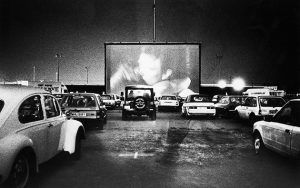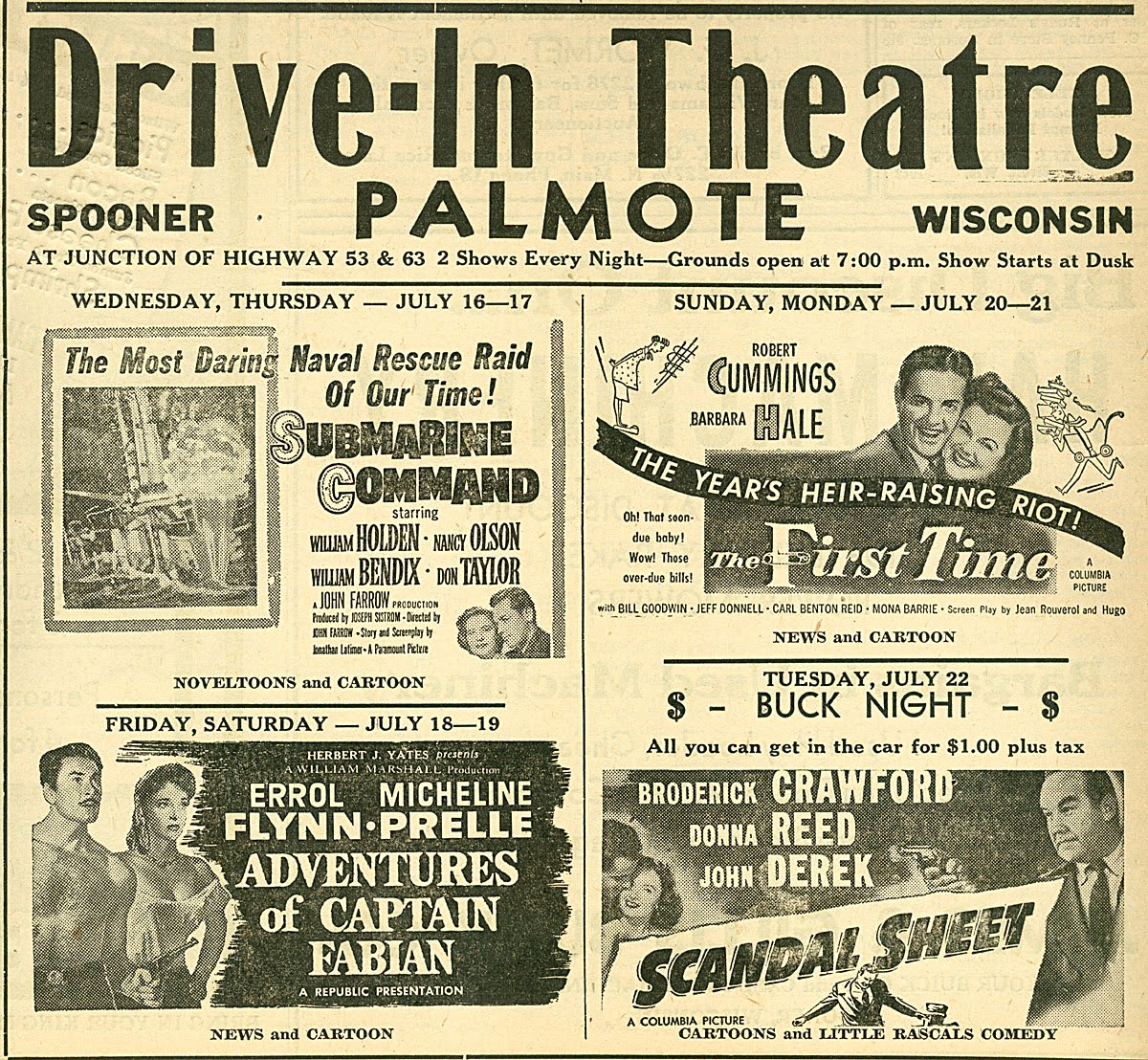
As the technology of the movie-going experience evolves, the drive-in theater has become one of the film industries many antiquated concepts, much like double-bill features. But from the fifties all the way up to the late seventies, going to a drive-in theater was a rite of passage for teenagers all over the country. This year, Honda even launched a campaign to save the drive-ins, and I was surprised to learn there were still some drive-ins left in America to be saved.
People who grew up in the drive-in era can still recall how wonderful it was to see a movie out in the open under the stars. A low-budget B movie company could take their movie reels on tour to the drive-ins and make a nice return because there were over 4,000 outdoor screens back then. A lot of terrible movies played the drive-ins, but the teens who came down to see them were usually too busy making out and steaming up their cars to watch them. The drive-ins were often called the “passion pits” and John Carpenter, the director of Halloween, proudly told the L.A. Times, he lost his virginity at one.
The drive-ins were invented by Richard Hollingshead Jr., and he got the idea from drive-in restaurants. The first drive-in theater opened in 1933 in Camden N.J., and the second one opened in L.A. on Pico and Westwood in 1934. But the drive-ins really didn’t start taking off until the mid fifties, when a lot of young kids were going car crazy.
American International Pictures, or AIP for short, was the #1 studio that made movies for the drive-ins. Founded by Sam Arkoff, AIP made such camp classics as I Was a Teenage Werewolf, Beach Blanket Bingo, and Little Shop of Horrors, just to name a few. AIP capitalized on the drive-ins, which the major studios ignored, and made a fortune in the process. As Sam Arkoff, the founder of AIP, recalled in his autobiography, “In the postwar forties and fifties, as car registrations boomed and people moved from the cities to the suburbs, drive-ins were built on inexpensive land in outlying regions where there were no hardtop theaters. With people moving out to the suburbs, a lot of drive-ins were opening on the outskirts of town, where the population was mushrooming.”
“The drive-ins just spread because everybody was car crazy in those days,” says Jonathan Haze, who starred in many classic B-movies, including Little Shop of Horrors and Swamp Women. “There were a lot of drive-ins in the south because of the weather. They could operate all year round. You didn’t want to sit in a snowstorm in a drive-in movie, although it might have improved some of them!”
Back then, the major studios didn’t consider summer a prime time to release their big movies, and they completely ignored the youth market, which AIP exploited to the hilt. “Teenagers were the drive-ins’ biggest audience,” Arkoff continued. “I began to see the value of aiming pictures at this teenage market – which also included the dating crowd into their mid-twenties. I often marveled at how the studios were ignoring them. The studio chiefs apparently didn’t understand that their primary audience had changed. To the big studios, the youth culture was an unknown entity.”
It’s too bad that most people today can’t experience watching a movie at a drive-in, because it was a much different experience than a regular theater. The screens were forty-feet high, and as one drive-in manager explained to the L.A. Times, “It’s nice in a rainstorm. You see the lightning off in the distance. I sure wouldn’t want to be working in a walk-in. No fresh air.”
Legendary B-movie producer/director Roger Corman (The Wild Angels, Death Race 2000) wanted his films to be well-lit, otherwise they would disappear into the darkness when they played the drive-ins. In later years, when darker cinematography became more popular, the studios had to make two sets of prints: a lighter set for the drive-ins, and a darker set for regular theaters. The two-print system was occasionally botched–when The Omen came out in 1976, Fox accidentally sent the dark prints to the drive-ins, and the light prints to the theaters.
If something wild or sexy happened on screen, people would honk their horns in approval.
Watching a movie at a drive-in was also an interactive experience. If something wild or sexy happened on screen, people would honk their horns in approval. If a movie got boring, people would sometimes white out the screen with their headlights.
As Stephen King recalled in his memoir On Writing, he was watching The Corpse Grinders at a drive-in when it was announced over the PA, “Steve King, please go home! Your wife is in labor! Your wife is going to have a baby!” As King was heading out in his old Plymouth, car horns were blasting and headlights were flickering on and off, congratulating the father-to-be. (King’s son Joe was born three hours later.)
The drive-ins kept going strong until the late seventies. By that point, the major studios took over those screens, and low budget movies moved into cable and the direct-to-video markets. The drive-ins were also sold off for their land, as property values even in the outskirts of towns where drive-ins were based rose.
As B-movie director Greydon Clark (Satan’s Cheerleaders, Without Warning) recalls, “At first, the majors used to feel that the drive-ins were a secondary market and they didn’t pay too much attention to it. But in the summer of 1978, they realized the value of that market and exploited it very well. That was the year Grease and Heaven Can Wait came out, Eastwood had one of his pictures out too. All of the sudden, the majors realized the drive-in market could be a force and they took all the screens.”
It’s not hard to see why a company like Honda has made an effort to save the few hundred drive-ins that are still left. The drive-ins were a big part of growing up for so many Americans for decades. Today’s generation may not understand what made them such a magical coming of age experience for millions of teenagers, but the memories live on for so many who attended them. Bless anyone who still shows movies at a drive-in, and is doing whatever they can to keep the last drive-ins alive.

